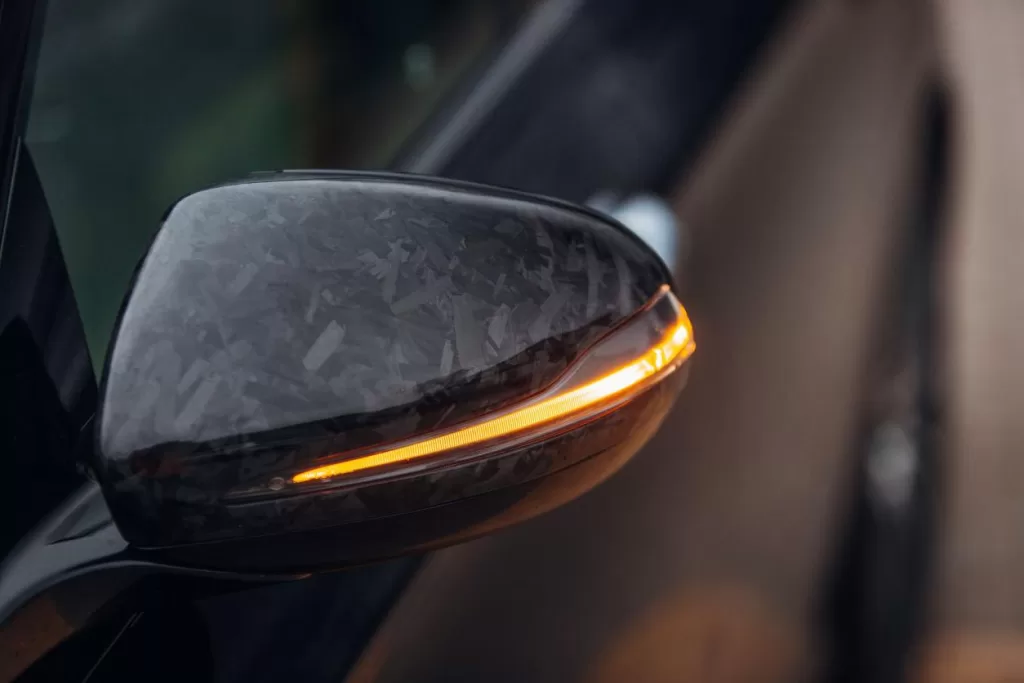Carbon Fibre in Cars: A Quick Guide

Carbon fibre in cars has slowly but surely advanced down the price levels since the 1980s until today. Formula One cars in the 1980s were the first to use the technology, although not at a price point for the average consumer, opening the door for its more widespread adoption in the automotive sector. It is now seen in cars like the electric BMW i series of cars, which first rolled out in 2013 and are going to expand in mid-2022.
Carbon Fibre Components in Cars
Carbon fibre, being a more expensive material than steel or aluminium, needs to be selectively placed on a car to maintain cost effectiveness. To this end, there is not a single rule as to where to put carbon fibre in a car in lieu of a more traditional material. Broadly speaking, the goal is to reduce the weight of a car; however, reducing the weight in different components of the car will have different overall effects. This can be with the goal of improving the driving characteristics of a car, but also of reducing weight, which is of particularly significant importance to battery electric vehicles.
Body panels – Carbon fibre body panels have the present a large weight saving compared to steel and aluminium, with an 80% and 50% weight saving respectively. These weight savings, like all weight savings, help to increase fuel efficiency, as less power is required to move the car. CFRP body panels, along with CFRP structural components, have the added benefit of equal and potentially improved crash safety performance.
Traditional metal components, both body panels and structural ones, dissipate their energy by bending and deforming, which increases the time taken for the car to change velocity. This severely reduces the forces experienced by the occupants of the vehicle. Carbon fibre reinforced plastics dissipate this in a slightly different way – once the CFRP goes beyond its ability to safely bend, the composite structure of the carbon fibres and polymer resin cracks and snaps. The energy required to break this tightly woven system is immense, meaning the lower material weight that CFRPs allow in cars will not necessarily compromise the safety of a carbon fibre car in a crash.
Structural components – Carbon fibre can be used in two ways as structural components; CFRPs can replace individual structural components, supplementing a frame otherwise constructed from more traditional materials. CFRPs can also fully replace the structure of a car, drastically reducing weight and increasing the rigidity of a car. When they are used supplement a traditional frame, like in the BMW 7 Series’ Carbon Core, the carbon fibre can be placed strategically to maximise the benefit. This is done by placing more carbon fibre on the higher sections of the car, particularly in the pillars and the roof, which lowers the car’s centre of mass, and so reducing how much the car rolls when turning at speed.
Wheels – carbon fibre wheels are for the most part prohibitively expensive, but they do offer some benefits to those willing to pay for them. The carbon fibre can be used to augment the aluminium wheels, but can also fully replace the aluminium, which saves around 50% in weight. This weight saving brings several benefits, including less road noise, higher ride quality, and faster acceleration.
Woven vs Chopped Carbon Fibre
Woven carbon fibre is perhaps the most well-known type of carbon fibre, with the very recognisable cross-hatched pattern. However, there is another type of carbon fibre reinforced plastic that is made from short strands of carbon fibre filament which are placed randomly to create a mat. This mat can then be impregnated and pressed to produce a CFRP. This type of CFRP is called CFSMC (carbon fibre sheet moulding compound).
This form of CFRP is particularly well suited to being formed into more complex shapes that woven carbon fibre don’t allow. The random orientation of the chopped carbon fibre filaments means that the final CFRP has equal strength in all axes, whereas a woven CFRP requires multiple layers to be placed at offset angles to each other. Woven carbon fibres can be used in the production of regular structural or body parts that do not hold complex shapes, but the chopped CFRP is well suited to the automated production of complex parts, like those in the BMW Carbon Core, which also uses some recycled carbon fibre strands.
Chopped carbon fibre can also have some cost benefits, as the initial upfront cost of a mould can be far outdone by the faster production that it allows. This means that CFSMC is likely to be the process that pushes forward the widespread adoption of carbon fibre in cars where cost-effectiveness is important.
Carbon Fibre Pressure Vessels in Cars
Carbon fibre also has an important automotive application in the construction of pressure vessels for fuels like liquid hydrogen and compressed natural gas (CNG). As hydrogen becomes an increasingly viable and cost-effective alternative to regular hydrocarbons, and battery electric vehicles, we are likely to see the market share of hydrogen-powered vehicles and so carbon fibre pressure vessels only increase. We have written a more detailed blog post about carbon fibre composite pressure vessels.

